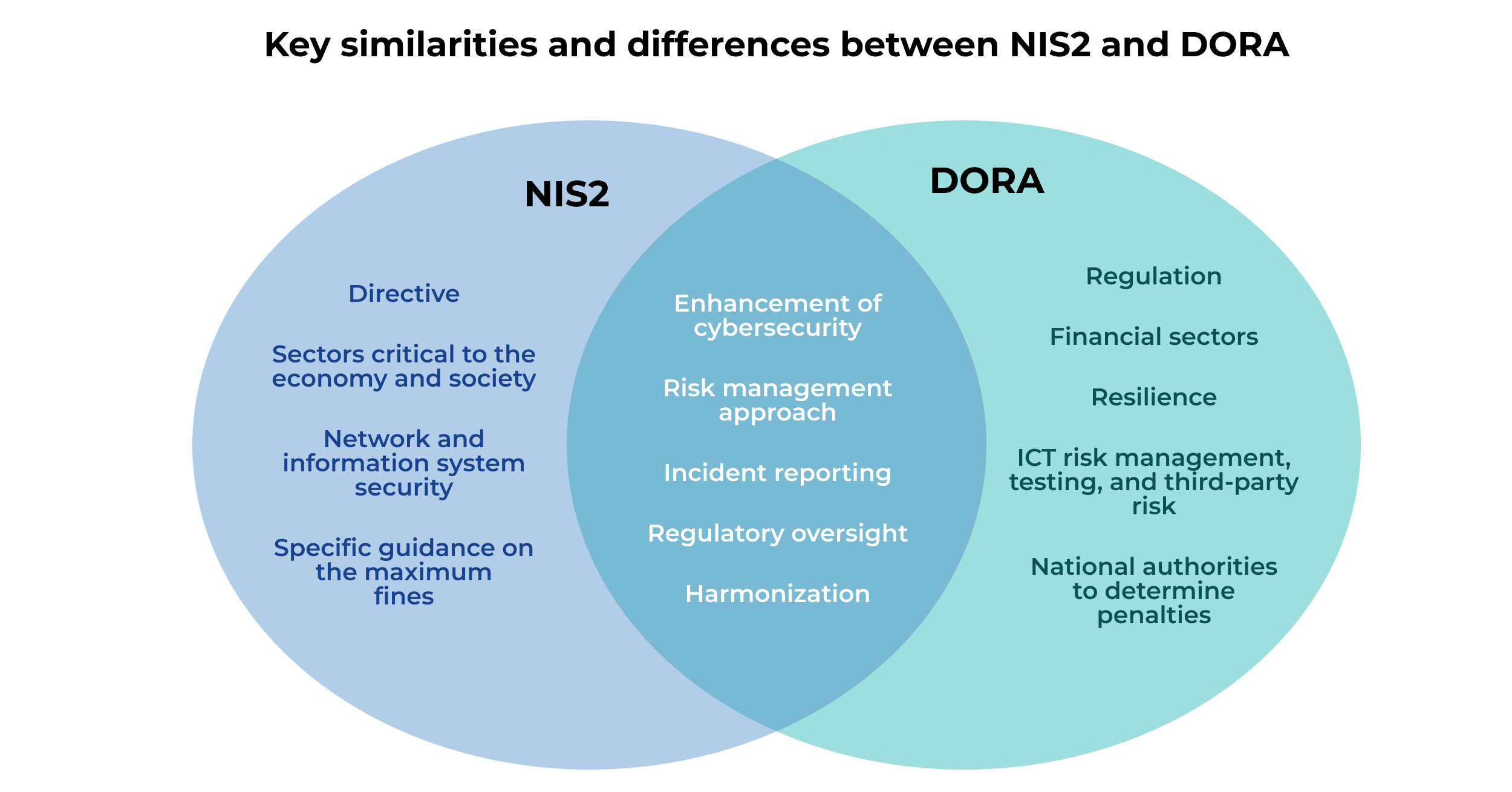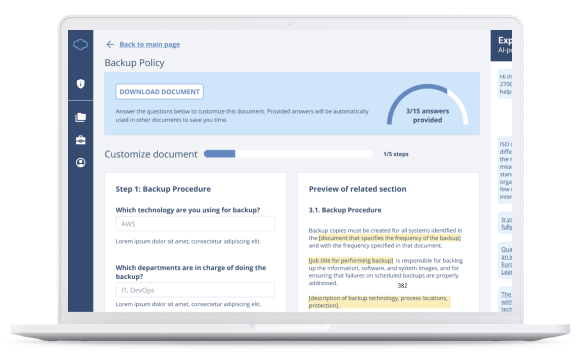When exploring the cybersecurity and digital resilience landscape in the European Union, two significant regulatory frameworks often come into focus: the Network and Information Security Directive 2 (NIS2) and the Digital Operational Resilience Act (DORA). Both frameworks aim to enhance the security and resilience of digital infrastructures, but they serve different sectors and have distinct scopes and objectives.
So, how are NIS2 and DORA similar, and how are they different?
Key similarities and differences between NIS2 and DORA:
- Both emphasize the importance of risk management practices.
- Both emphasize cybersecurity measures.
- NIS2 and DORA are different types of legislation (directive and regulation, respectively).
- NIS2 covers sectors critical to the economy and society, while DORA focuses on the financial sector.
What is NIS2?
NIS2 refers to the Network and Information Security Directive 2, which is a legislative framework established in 2022 by the European Union to enhance cybersecurity across member states. It is an update to the original NIS Directive, which was the first piece of EU-wide legislation on cybersecurity, adopted in 2016.
Learn more here: What is NIS2?
What is DORA?
DORA stands for the Digital Operational Resilience Act, a regulation introduced in 2022 by the European Union to strengthen the digital operational resilience of the financial sector. It aims to unify and streamline the requirements of several EU laws and regulations (e.g., NIS Directive, GDPR, PSD2) specifically for the financial sector.
Learn more here: What is DORA?
NIS2 and DORA similarities
Here are some of the main similarities between NIS2 and DORA:
European legislation: Both NIS2 and DORA are applicable only to the countries within the European Union.
Enhancement of cybersecurity: NIS2 and DORA both aim to ensure that entities can withstand, respond to, and recover from cyber threats and operational disruptions.
Risk management approach: Both frameworks require entities to assess and manage risks.
Incident reporting: Both NIS2 and DORA require incident reporting to relevant authorities, to ensure that relevant incidents are communicated and handled quickly.
Regulatory oversight: Both frameworks establish regulatory oversight for monitoring and enforcement to ensure compliance with their requirements.
Harmonization: NIS2 and DORA aim to harmonize cybersecurity practices across the EU to ensure a consistent level of protection.
NIS2 and DORA differences
Although they have many similarities, NIS2 and DORA also have significant differences:
Type of legislation: NIS2 is a directive, meaning it is not applicable directly to companies — rather, it sets the baseline for EU countries to publish their own legislation that will apply to companies, while DORA is a regulation, directly defining requirements to organizations.
Scope of application: NIS2 applies to organizations considered essential and important entities across 18 sectors, whereas DORA applies specifically to financial entities.
Resilience: DORA has an overall approach to resilience not found in NIS2.
Compliance approach: NIS2 is more generic, providing a baseline for member states to implement, while DORA is more prescriptive, with detailed requirements for financial entities.
Specific requirements: DORA includes specific provisions for ICT risk management, testing, and third-party risk, while NIS2 focuses on enhancing overall network and information system security.
Enforcement and penalties: NIS2 and DORA enforcement mechanisms, as well as penalties for non-compliance, differ in terms of enforcement authorities. Additionally, NIS2 provides more specific guidance on the maximum fines that can be imposed, similar to the GDPR, whereas DORA leaves more discretion to national authorities to determine penalties.
Do companies need to comply with both NIS2 and DORA?
No, there is no overlap between these two frameworks — financial organizations that need to comply with DORA do not need to comply with NIS2, and critical infrastructure organizations that need to comply with NIS2 do not need to comply with DORA.
This is directly specified in NIS2 Article 4, paragraph 1 and DORA Article 1, paragraph 2.
NIS2 and DORA: A positive contribution to harmonize and enhance cybersecurity and resilience
Both NIS2 and DORA represent significant strides in enhancing the cybersecurity and operational resilience frameworks within the European Union. However, while they share common goals in the security posture and incident response mechanisms, their scopes and specific requirements differ, which requires a collaborative effort among EU member states, regulatory bodies, and the private sector for a successful implementation of both frameworks.
Understanding these similarities and differences is crucial for organizations operating within the EU, as it helps them navigate compliance obligations; and, by leveraging the synergies between these two frameworks, it enhances their overall security posture and resilience against cyber threats, contributing to a more secure and robust digital ecosystem in Europe.
To implement these frameworks easily and efficiently, click here to see our NIS2 Documentation Toolkit and DORA Documentation Toolkit.

 Rhand Leal
Rhand Leal

